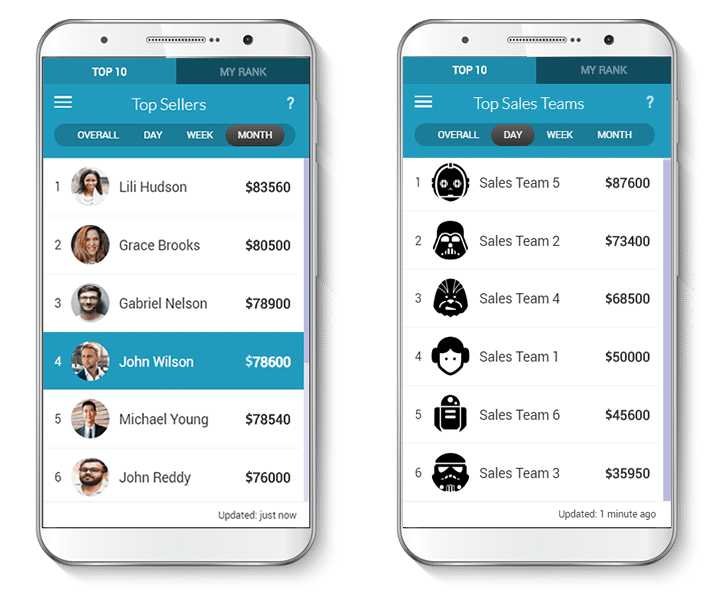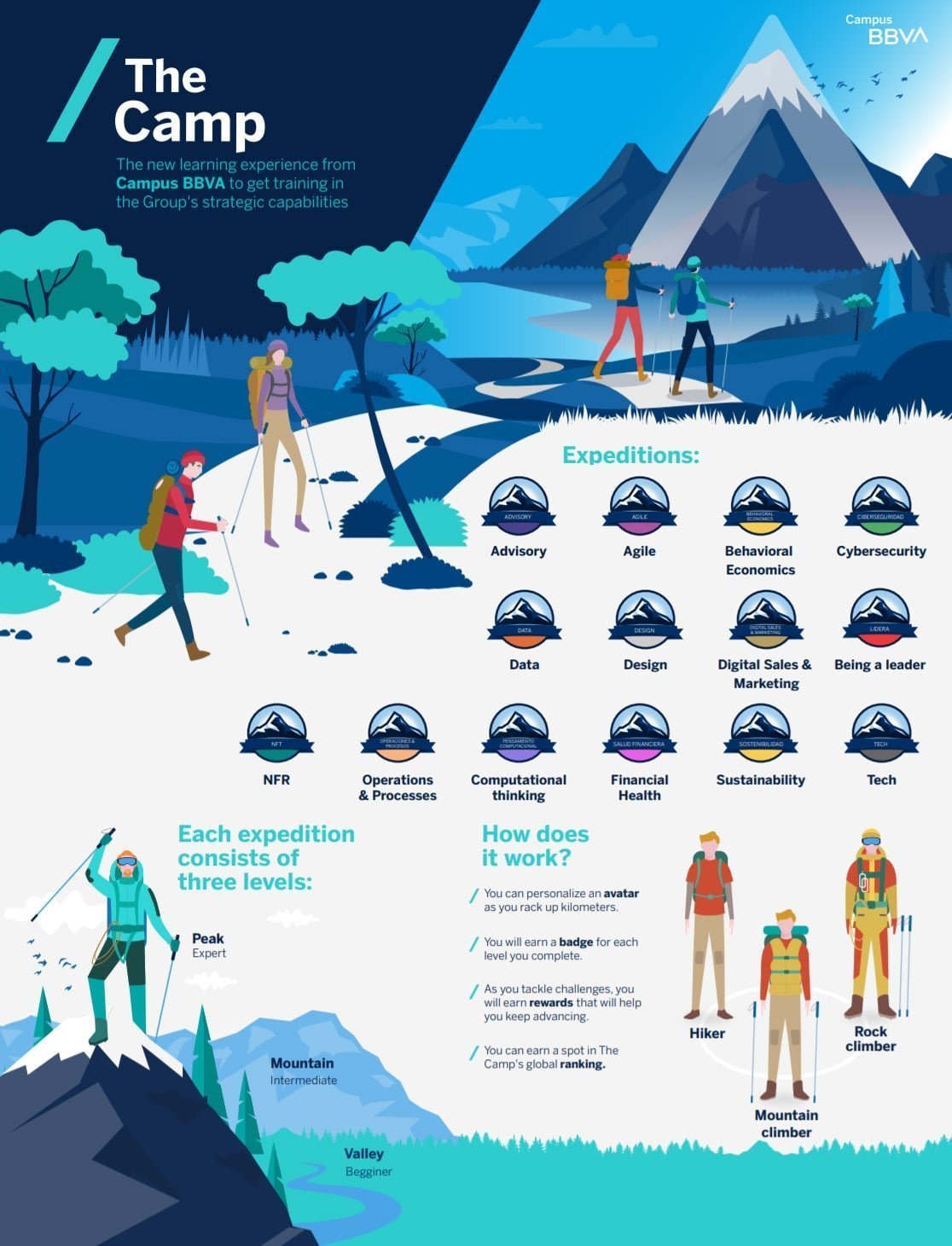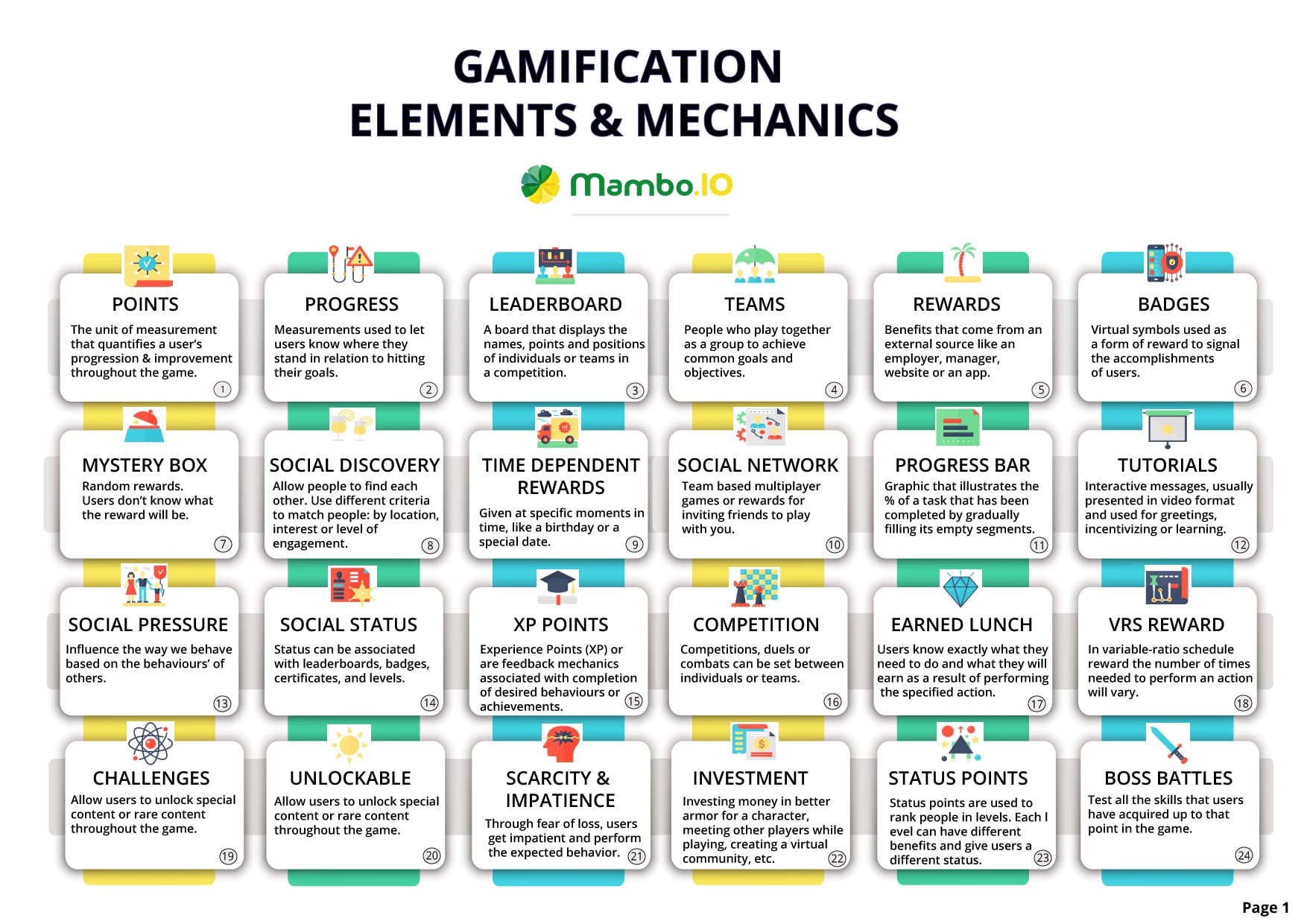Actionable Gamification Steps for Upskilling and Reskilling Workforces
Table of Contents
- Upskilling and reskilling is crucial
- Upskilling & reskilling workforces: definition
- Why upskilling & reskilling is crucial
- Actionable gamification steps for upskilling and reskilling
- The benefits of using gamification in education for upskilling and reskilling workforces
- Conclusion
- Machine Learning In Finance: 12 Essential Applications
- How To Create Interactive Compliance Training For Bank Employees
- How Fintech Apps Are Using Gamification To Increase User Engagement
- Top Gamification Companies for Employee & Customer Engagement
Upskilling and reskilling is crucial
Even before the pandemic, the skills needed across sectors were changing as automation and AI stepped in.
It’s estimated, by the McKinsey Global Institute, that 14% of the world’s workforce will need to get new skills or change jobs to compete.
All this by 2030. And in a survey by the same firm, 87% of execs saw skill gaps emerging in their workforce.
But the pandemic has escalated this shift in many ways. With rapidly changing demand, working conditions and restrictions, workers are trying to adapt.
So how can business leaders help with reskilling and upskilling their workforce in a post-COVID world?
Upskilling and reskilling workforces is a delicate challenge. It requires a talent strategy that applies a 360 approach to social, emotional, digital, cognitive, adaptability and resilience skills.
It demands that companies spend more on learning and commit to an upskilling and reskilling programme that enables future success. And gamification is critical to helping embed these learnings.
We know gamification increases uptake and adoption.
So, in this write-up, we’ll share a number of ways you can use gamification to upskill and reskill your workforces efficiently in a post-pandemic environment.
It’s time to close those skill gaps and prepare your team for the future with a multi-pronged approach.
Upskilling & reskilling workforces: definition
More than just buzzwords, upskilling and reskilling are necessary business tools to help firms compete in the global economy. But what does it actually mean to upskill or reskill someone?
Isn’t that the same thing? Well, not quite.
Upskilling adds new abilities to your employee’s toolkit and reskilling teaches employees to do a new job or role. So one allows them to transition to a new position while the other makes them more effective where they currently are.
Yes, the employee learns new skills with both. But reskilling implies a movement to a new role, company or sector. So, if you teach your app developer a new coding language, that’s upskilling.
But if you teach him customer support skills for a lateral move to your Technical Help Desk, that’s reskilling. So keep the distinction in mind when you’re designing your training plans.
Download your free
“Gamification Guide”
Get your PDF now and start transforming your approach to digital engagement!
Why upskilling & reskilling is crucial
Oh, why does it matter, you might say. I can always hire for emerging skills. Of course, you could! But hiring a new employee is more costly than retaining your existing one.
The best (and most cost-effective strategy) is for Chief Learning Officers (CLOs) or HR Managers to create robust digital training programmes that deliver effective learning content to all roles. You simply need to think about:
1. Impact of economic changes
We’re going to be working differently from now on. The pandemic has made most of us remote workers or; at the very least, contact-averse.
It required us to change how we interact across our whole working ecosystem to minimise the risk of infection. Naturally, this disrupted jobs and changed the skills workers needed to do those jobs.
Sceptical? In UK healthcare, less than 1% of appointments were over digital video chat in 2019. Now, a little over a year later, 100% of consultations are on the phone then 7% go on to in-person appointments.
In just a few months, GPs and Nurses have had to fundamentally change how they’re used to working. And that change is expected to stay long after COVID is defeated.
And it’s not just the UK.
Places with huge medical care staff shortages like Indonesia have been using telehealth capabilities to meet demand.
That escalated with COVID-19 as the government called on these firms to handle medications and consultations in the wake of increased pressure on the healthcare system.
The medical sector is the most obvious changing environment, but it’s not the only one.
Banks scrambled to upskill workers into handling mortgage-refinancing, coaching clients in digital tool use and managing distressed customers, essentially overnight.
Supermarkets worked to deliver more goods online and brick-and-mortar retail stores went digital.
2. Upskilling and reskilling vs. external hiring
We mentioned briefly before that hiring new employees is more costly than upskilling or reskilling your current employees. But beyond that, your current team has a lot more going for them than just affordability.
Yes, new recruits will have cutting-edge skills; but they lack deep exposure to your culture, strategy, customers, partners and clients.They don’t have any relationships or track record of success with your patrons.
Your current employees have intimate knowledge of your systems and how they interact. They understand the structure of your organisation and whom to turn to for help. Lastly, they are (hopefully) aligned with your business goals.
Sure, they may not know the latest tech solution, but chances are they can be taught it quicker than you could recruit.
It now takes around 23 days to recruit someone.
That’s blended across all industries and roles (many take far longer). Contrast that with the 20 hours it takes to learn a new skill and it quickly adds up.
You could have your team trained on the latest software or machinery in under a week. Even the best hiring manager would struggle to fill a role that quickly.
3. Talent supply and demand misalignment
Then you have the unbalanced nature of the talent pool versus the demand opportunities.

We’ve all made changes to our buying habits, transit patterns and travel plans. And, as a result, some jobs will need less staffing and others will need more.
Think about the boom in online retail. In China, older people have begun to shop online for the first time ever. And 13% of consumers in Europe planned to visit online retail websites for the first time in April.
For the US, hospitality and food service work is now vulnerable but grocery is booming. Two to three million extra workers are needed to meet demand.
Some platforms are trying to help. Uber made WorkHub to try and connect drivers to other companies needing support like Shipt. Talent Exchange opened in April to thunderous applause as over 600k jobs were listed in the first 2 weeks.
Marketplaces like these are providing a platform to connect companies with workers who have transferable skills and just need reskilling to get up to speed.
This will help correct the imbalances between the talent supply and the talent demand post-pandemic.
It’s up to CLOs and HR Managers to make the best use of these platforms to plug workforce gaps
4. Supply chain restructuring
The concern that the pandemic has and will restructure supply chains is real. Due to disruptions in the overseas travel of goods, many companies will look to regionalise or localise their sourcing and production.
This will change what workforce skill mix is needed and in what location. Even global companies are expecting to make a shift to near-point-of-sale production.
Foreign electronics manufacturers and automakers are already shifting beyond China. And France was planning to move key industries to domestic production even before the pandemic.
It’s a big shift from the off-shoring boom of the 90s. On-shoring was predicted back in 2013, but COVID has escalated the move to local production.
This presents both an upskilling and reskilling challenge as roles are shuffled and remote production management becomes a local direct report function.
By making new connections with local producers and adding new skills to their teams, companies can make the necessary supply chain changes needed to disaster-proof their businesses.
That way, global disruption like a pandemic will have a less damaging effect on the supply of goods and services locally. But it will require the use of talent exchanges, reskilling and upskilling to ensure staff is adequality placed to meet these new ways of working.
5. Upskilling and reskilling employees with gamification in e-learning trainings
One way to upskill and reskill staff, especially in a blended work environment, is with eLearning.

But eLearning is only as effective as its engagement rate. And gamification is proven to increase absorption. As such, it’s a useful tool to improve work performance overall.
Because of these benefits, “gamification market size is projected to grow from USD 9.1 billion in 2020 to USD 30.7 billion by 2025, at a Compound Annual Growth Rate (CAGR) of 27.4% during the forecast period,” according to Markets and Markets.
Gamification is growing because it helps employees get excited about increasing, updating or expanding their skills in line with future company needs.
It can be applied to upskilling and reskilling; offering attractive badges, achievements and rewards for progress against goals.
Using training innovations like gamification, companies can make more interesting and interactive experiences for their eLearning content to really draw employees into the learning environment.
Actionable gamification steps for upskilling and reskilling
1. Define learning goals

First, you need to start with defining what you want attendees to learn and the session objectives. Break it down into specific skills that you need employees to gain competency in. Just list everything.
It’s better to be more detailed than less. Then, you can set a priority for each that aligns with your business goals.
This is where you will begin to flesh out the overall outline of your learning programme.
You’re not thinking about delivery just yet. Just top-line skill needs. Once you have this outline for your programme, you can expand into the approach.
2. Define learning behaviours
But before you address the how, you need to flesh out the what. What do you want your employees to do when they are in your eLearning programme that’s going to help them meet those objectives you just created.
Do they need to be triggered emotionally? Maybe you want to create a fun narrative then. Maybe they need to feel some healthy competition.
If so, you might build in some game mechanics to encourage this like challenges and points. Whatever you want them to do or feel during the modules needs to be linked to each objective.
3. Survey your employees
And you don’t need to decide all this on your own. It’s okay to ask your employees directly; in fact, it’s encouraged.
Use an online survey platform to deliver a quick questionnaire. Ask them what they would find engaging and fun. Go beyond demographics (which you should have anyway) into the psychographics of your learners.
What are their attitudes, motivations and behaviours? Does everyone fit into a similar learning mould or are there some distinct groups? Is the sales team telling you they want more individual challenges while the HR team says they want team tasks?

You’ll want to note all this down in your training plan.
Think of the different ways that you can apply narratives, points, badges and competition to appeal to the distinct learning groups you identified in your survey.
Once you’ve got your survey results and learner groups mapped, you can move on to activity loop creation.
Or perhaps, assign some badges to your sales target levels. Each little sign of appreciation keeps your sales team more motivated to achieve the next level
4. Devise activity loops
It’s now time to make your activity loops. There are two kinds.
The first is engagement loops. These talk about what the players are doing, why and how the module is going to respond. It might include things like tap, placement and click as engagement drivers.
Whatever you decide on, you need to provide your learner with immediate real-time feedback. That’s critical to helping them understand what they need to do in a scenario.
The second type is progression loops. These serve to change the experience over time.
Think about adding challenges or upping the difficulty so it’s in line with the experience of the learner. Create levels with narratives that progress your learners from one place to another within the context of your game theme.
So, you could start them on a small island, then progress them to a boat then to a large seaside resort. It’s just about that movement and traction that your learners need to keep engaged.
5. Add gaming elements to your training
Okay, so you know about the different types of loops now. Let’s talk about the specific types of interactions you might want to use in your learning.
Drive engagement with rewards

Fixed action rewards (earned lunch)
This is the easiest one. Here you tell the user what they need to do to get a reward. So you say “complete this task X number of times and you’ll get Y.” It’s clear and easy for the learner to understand and they feel motivated to complete the actions so they get their ‘earned lunch.’
Random rewards (mystery box)
This is an unpredictable reward. It adds an element of surprise or delight. They could get a special mystery box or loot drop when they complete a task. They won’t know what’s in it or what the reward will be before they get it. It’s exciting and variable. One box could have a huge reward and the other no so much. The variety is engaging.
Download your free
“108 Gamification Elements and Mechanics”
Get your cheat sheet and have a quick reference at your fingertips!
Sudden rewards (easter eggs)
Similar to random rewards, Easter Eggs have an unknown trigger and an unknown reward. They’re totally unexpected and trigger the learner’s dopamine response.
They also provide a talking point that can help learners keep each other engaged. Also, human nature causes us to look for patterns, so easter eggs appeal to our theory-creating subconscious leading to positive speculation.
Rolling rewards (lottery)
Everyone is familiar with the lottery. Lotteries have a low barrier to entry but you have to be “in it to win it.” They motivate by requiring a baseline of activity to participate in the possibility of reward. Learners feel FOMO if they don’t meet the bar to get in. And they may try to increase their chances through other tasks that give more entries.
Social treasure (gifting)
Who doesn’t like a present? Gifts can’t be earned or bought; they must be given by people who ‘like’ you. It creates social currency and a feeling of community. Learners look forward to giving out and receiving their little treasures each day. And they can also be used as an acquisition tool to bring new learners into the activity.
Prize pacing (collection set)
Think Pokemon – you gotta catch them all. The collection rewards learners with small pieces at a time with big rewards once you complete the set. This means that most people won’t get the big reward because the parts become increasingly hard to get as it goes on. But a small few will collect them all and have ultimate bragging rights when they do.
Measure learning progress with a point system, leaderboards and levels.

Regardless of which prize systems you use, you simply must employ a tracking method for progress. This can take the form of a point system, leaderboard or level system.
It’s arguable that the most effective programmes use all three. Points show the learner how far they have come. It provides them with real-time feedback on how they are doing.
Levels show them what they have to look forward to and what they have achieved.
They are shiny little bragging rights. And leaderboards help them compare themselves with the other learners in the programme. They will know at a glance who is doing well and who needs support.
Superior achievement in points, levels or leaderboards can be combined with certifications and awards that serve as tangible reminders of what they’ve learned.
The key here is to show, report on and reward the progress of each learner in a way they can relate to.
Offer personalization with avatars
We’ve said it several times: the experience should be individualised. And there’s no more personal approach than offering bespoke avatars.
Now, your budget may not permit it. But if it does, allowing your learners to choose their facial features, hair, body type and clothes can help them connect with the learning better.
Be careful to not let the character creation screen take up too much time. But you don’t need to offer a ton of personalisation features to allow your learners to see themselves in this avatar.
You could have a set avatar body they can dress up in cute outfits or a selection of pre-rendered avatars to choose from.
What we don’t recommend is having just one avatar. No one can connect with that. We’ve found that offering even just a little bit of personalisation can really increase the initial connection between your learner and the module.
Give status of knowledge using badges
Badges help the learner and others recognise their achievement within the learning environment.
People get excited about collecting badges and that prospect is one of the strongest engagement drivers.
Through badges, you’re showing learners that they are moving forward, they are appreciated and they’re poised for success. Badges can be given for all sorts of milestones including skill competency, overall achievement and progression.
You’ll want to use them enough that they feel attainable but still maintain some scarcity. You’ll want other learners to feel aspirational about achieving each badge.
Finally, badges can make good infrequent rewards for reskilling and upskilling challenge completion. BBVA (Banco Bilbao Vizcaya Argentaria, S.A.) did this great in their camp-themed upskilling and reskilling programme.
Learners progressed from the valley to the peak and levelled up from Hiker to Mountain Climber across 14 badged challenges covering everything from Cybersecurity to NFR.
It’s a great example of a well thought out and narrative-driven story.

Source: BBVA
The benefits of using gamification in education for upskilling and reskilling workforces
Why is gamification becoming so popular for learning programmes? Well, it is good for:
- Resilience – If you don’t succeed; try, try again. Learners will experience failure but by overcoming it, gain the resilience needed to succeed in business challenges.
- Retention – Learning games boost your long-term knowledge gain by up to 10x. So it’s a powerful learning method for delivering content that sticks in the mind.
- Engagement – Games are just more fun. When something is fun, we want to do it. Even dull learning modules can be made more engaging through games.
- Visible Progress – It’s not a guessing game. Learners can see how well they are doing and how far they have come.
- Comfort – Most of us grew up playing games of some sort. Interacting in that kind of environment is second nature.
- Real-time Feedback – The system alerts and helps learners correct their mistakes and learn from them.
- Consistent Completion – Because games are fun, the tasks you assign using them actually get done and are completed more consistently. This is because there are visible benefits to doing so.
- Pride – When you are recognised for your achievements, you feel good. Gamification provides a sense of pride in every learner.
Conclusion
The world has changed forever. More of us are working remotely, reducing contact and changing the way we live.
And that’s causing businesses and supply chains to adjust. Skill gaps that now exist are widening. So it’s up to companies to reskill and upskill their workforce rapidly.
One way to do that is to create robust in-house learning programmes. Due to the reduced face-to-face contact we’re all maintaining, online delivery makes the most sense.
And we know gamification is a powerful eLearning tool to increase competition rates, engagement, sense of achievement and provide real-time feedback.
How you build your winning programme is up to you. There are a lot of different mechanics at your disposal.
Mix in use of easter eggs, earned lunches, collection sets, leaderboards and point systems to create a unique set of evolving loops for your learner avatars to enjoy. Provide real-time feedback and visible badges to increase adoption.
Finally, create a narrative that’s going to appeal to your learners on a physiological level. When you do these things, you’ll more easily transition teams into high-demand areas and prepare your workforce for the challenges of tomorrow’s economy.
That’s our actionable list of gamification steps to help you with upskilling and reskilling your workforce.
We hope you enjoyed it, if you have a question about this or anything else; let’s chat.
Latest Posts
Machine Learning In Finance: 12 Essential Applications
The impact of machine learning on finance is significant. Thanks to this technology, financial institutions are now equipped to make efficient decisions. Through the analysis of data sets, machine learning […]
How To Create Interactive Compliance Training For Bank Employees
Banking compliance training isn’t just another task. It’s the stage where everything else performs. Banks must navigate a myriad of regulations and laws. After all, this is a trust-driven, high-stakes […]
How Fintech Apps Are Using Gamification To Increase User Engagement
Discover how gamification in fintech is revolutionizing financial engagement, making banking fun & boosting user loyalty.









